Reaching the highest point in Africa, Uhuru Peak, is a coveted achievement for adventurous trekkers. The 7-day Kilimanjaro climb via the Machame route offers a path to this iconic summit. Though challenging, this gradual ascent through diverse landscapes provides the best chance for success. Climbers must prepare thoroughly, equip themselves properly, and acclimatize carefully to handle the high altitudes. With the right mindset and guidance, this journey can transform one’s perspective and ignite a lifelong passion for exploration. The captivating details of this remarkable trek await those ready to embark on an unforgettable adventure.
Good To Know
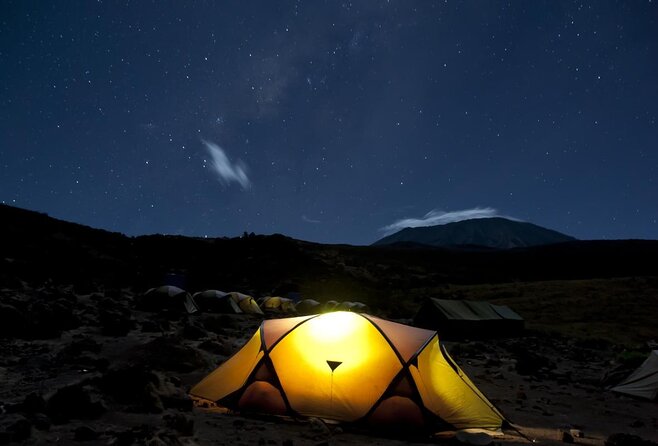
- The Machame Route, known as the "Whiskey Route," offers a diverse 7-day trek through various ecosystems to reach the iconic Uhuru Peak.
- Proper gear, including layered clothing and hiking boots, is essential for navigating the challenging terrain and harsh conditions on the mountain.
- Gradual ascent and careful acclimatization are crucial to adapting to the high altitude and preventing altitude sickness.
- The trek features distinct stages, from the lush forested slopes to the final push through the arctic-like environment of Barafu Camp.
- Reaching Uhuru Peak, Africa’s highest point, is a transformative journey that fosters self-discovery, resilience, and a deep appreciation for nature.
Preparing for the Kilimanjaro Challenge

Proper preparation is the key to conquering the majestic Mount Kilimanjaro. Climbers must ensure they’re physically fit, with good cardiovascular health and stamina. Investing in quality hiking gear, from boots to layers, is crucial.
Acclimating to the high altitude is essential, so a gradual ascent is recommended. Climbers should also familiarize themselves with the Machame Route, understanding the terrain, campsites, and potential challenges.
Staying hydrated, pacing oneself, and being mentally prepared for the grueling journey are equally important. With the right preparation, the Kilimanjaro challenge becomes a once-in-a-lifetime opportunity to stand atop the "Roof of Africa" and revel in the breathtaking views.
You can also read our reviews of more tours and experiences in Moshi.
The Machame route, often dubbed the "Whiskey Route," winds its way through diverse landscapes, offering trekkers a captivating journey to the summit of Kilimanjaro.
This popular trail is known for its steady ascent, with several distinct stages:
- The lush, forested slopes of the Machame Camp.
- The exposed ridges and rocky terrain of the Shira Plateau.
- The final push through the arctic-like environment of the Barafu Camp before reaching the iconic Uhuru Peak.
Each stage presents its own unique challenges, but the Machame route’s gradual incline and diverse scenery make it a favorite among adventurous climbers seeking an unforgettable Kilimanjaro experience.
Gear and Equipment Essentials
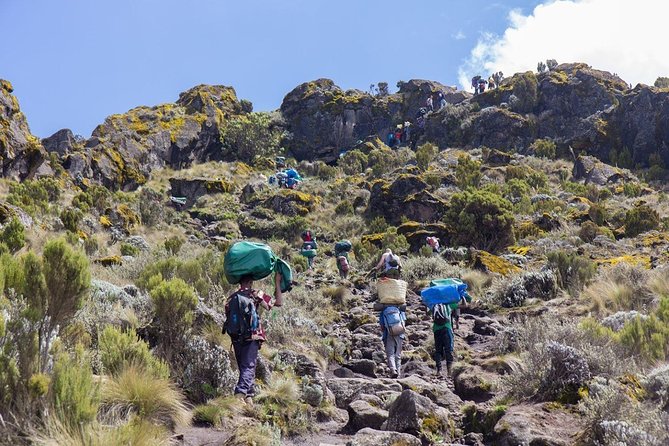
Trekkers embarking on the Machame route will need a comprehensive set of gear and equipment to ensure a safe and comfortable journey. From insulated hiking boots to weatherproof jackets, the right gear can make all the difference on the mountain. Here’s a handy table outlining some essential items:
| Clothing | Gear |
|---|---|
| – Thermal base layers – Fleece mid-layers – Waterproof/windproof outer layers |
– Backpack – Sleeping bag – Headlamp |
| Essentials | |
| – Sunglasses – Lip balm – Water bottle |
Renting or purchasing quality equipment in Moshi is recommended for trekkers who don’t want to transport their gear from home. With the right equipment, climbers can focus on the challenge ahead and enjoy the breathtaking views along the Machame route.
Acclimatizing to High Altitudes
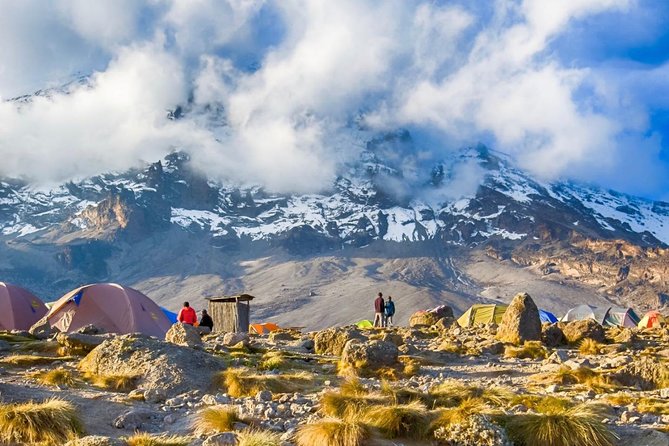
Ascending Kilimanjaro via the Machame route demands careful acclimatization to the high altitudes.
The human body requires time to adjust to the decreasing oxygen levels as you climb higher. Neglecting this process can lead to altitude sickness, which can be life-threatening.
To ensure a safe and successful summit:
- Ascend slowly, increasing your elevation by no more than 1,000 feet per day.
- Stay hydrated and eat well to support your body’s adaptation.
- Consider taking altitude sickness medication as directed by your guide or doctor.
Proper acclimatization is essential for reaching Uhuru Peak.
Hiking the Machame Route Stages
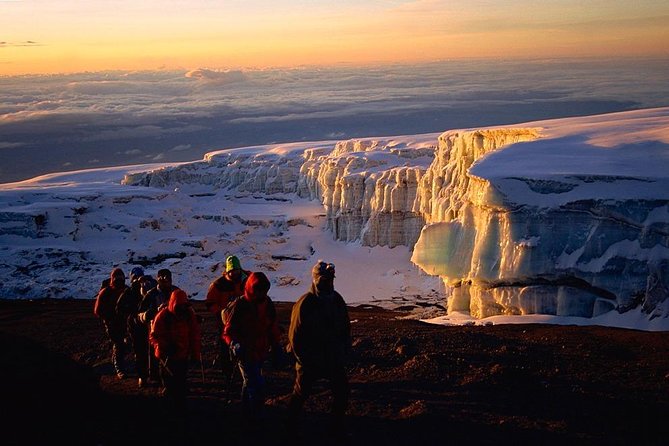
The Machame route, often referred to as the "Whiskey Route," is a popular choice for those attempting to conquer Kilimanjaro. This seven-day trek takes climbers through diverse landscapes, from lush rainforests to rocky, barren terrain.
Day one begins with an ascent through the dense Kilimanjaro forest, followed by a steady climb to Machame Camp. The next few days involve steeper climbs through the moorland and alpine desert, with stops at Shira Camp, Lava Tower, and Barranco Camp.
The final push to the summit, Uhuru Peak, is a grueling but rewarding endeavor, testing climbers’ endurance and determination. Each stage offers breathtaking views and unique challenges, making the Machame route a truly unforgettable Kilimanjaro experience.
Encountering Kilimanjaro’s Diverse Landscapes
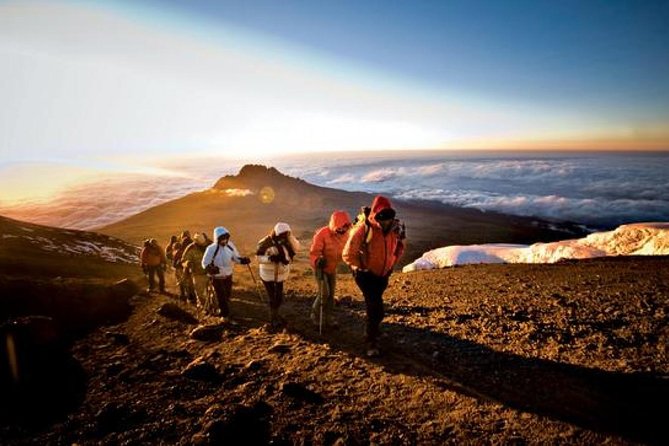
As climbers ascend the Machame route, they’ll encounter Kilimanjaro’s diverse and ever-changing landscapes. This iconic trek showcases the mountain’s remarkable variety:
-
Lush rainforests at the base, home to a rich array of flora and fauna, give way to moorlands with twisted, otherworldly plants.
-
Reaching the drier alpine zone, hikers witness the transition to a barren, almost lunar landscape of volcanic rock and scree.
-
The final push to the summit traverses the arctic-like alpine desert, where climbers are rewarded with breathtaking views of the snow-capped peak.
This gradual evolution of ecosystems is a testament to Kilimanjaro’s remarkable geographic and climatic diversity.
Reaching the Iconic Uhuru Peak
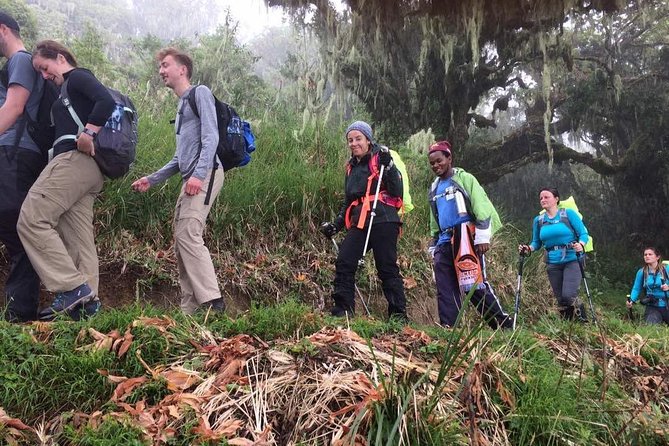
Upon reaching the final leg of the Machame route, climbers set their sights on the iconic Uhuru Peak – the highest point of the African continent.
The final push to the summit is challenging, requiring climbers to ascend steep, rocky terrain. Trekkers must remain vigilant, watching for signs of altitude sickness as they near the peak.
Yet the sense of accomplishment is unparalleled as they step onto the summit, taking in the breathtaking views of the glaciers and surrounding landscapes.
The journey to Uhuru Peak is undoubtedly the highlight of the Kilimanjaro climb, a true test of endurance and determination that rewards climbers with an unmatched sense of achievement.
Reflections on the Kilimanjaro Climb
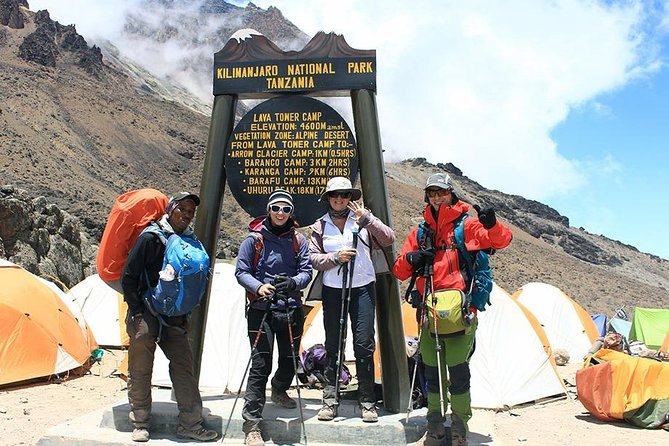
For many who conquer the mighty Kilimanjaro, the summit of Uhuru Peak marks but the halfway point of their extraordinary journey.
As climbers descend, they reflect on the challenges overcome and the profound sense of accomplishment. This Kilimanjaro climb is a transformative experience:
-
Pushing physical and mental boundaries instills a deep sense of self-discovery and resilience.
-
Witnessing the diverse ecosystems and breathtaking vistas creates a profound appreciation for the natural world.
-
The camaraderie forged with fellow adventurers leaves a lasting impact, creating memories to cherish for a lifetime.
The Kilimanjaro climb isn’t just a summit, but a journey that leaves an indelible mark on the soul.
Frequently Asked Questions
What Is the Best Time of Year to Climb Kilimanjaro?
The best time to climb Kilimanjaro is during the dry seasons of January-March and June-October. Climbers can expect clear skies and milder temperatures, though crowds will be higher during the peak summer months.
Can I Climb Kilimanjaro Without a Guide?
Climbing Kilimanjaro without a guide is not recommended. Guides are essential for navigating the mountain, ensuring safety, and providing necessary support. Attempting the climb solo can be extremely dangerous and is not permitted by most tour operators.
What Is the Success Rate for the Machame Route?
The Machame route has a success rate of around 85-90%, making it one of the more popular and achievable routes for climbers to reach the summit of Kilimanjaro. This high success rate is due to its gradual ascent profile.
Can I Rent Equipment in Moshi?
Yes, personal hiking and trekking gear can be rented in Moshi. This allows travelers to avoid the hassle of bringing their own equipment on the Kilimanjaro climb. The tour provider can assist with arranging gear rentals.
How Much Should I Tip the Porters and Guides?
The tour provider recommends tipping the porters and guides between $200-$300 per person, depending on the size of your group. This covers their hard work in supporting your Kilimanjaro climb safely and comfortably.
The Sum Up
Conquering Kilimanjaro’s Machame Route is a life-changing adventure that challenges both the body and mind. The gradual ascent, diverse landscapes, and sense of camaraderie make this trek an unforgettable experience. Reaching Uhuru Peak, Africa’s highest point, is a triumphant moment that instills a profound sense of personal growth and accomplishment. The Kilimanjaro climb via the Machame Route is a journey that leaves a lasting impact on all who undertake it.
More 7-Day Experiences in Moshi
More Tour Reviews in Moshi
Not for you? Here's more nearby things to do in Moshi we have reviewed
- Day Trip To Tarangire National Park
- Mountain Kilimanjaro Climbing 6 Days Machame Route
- 6 Days Rongai Route Climbing Mt.Kilimanjaro
- 7-Day Kilimanjaro Climb Machame Route
- 7-Days Tour Mount Kilimanjaro Trekking via Machame Route
- Kilimanjaro: Lemosho Route and Camping Safari
- 8 Days 7 Nights Private Lodge Safari
- 5 Days Comfort Safari in Tanzania
- 2 Days Lodge Safari.
- One Day Tanzania Safari – Tarangire or Arusha National Park
- Day Trip Lake Manyara
- Mt.kilimanjaro-machame Route
